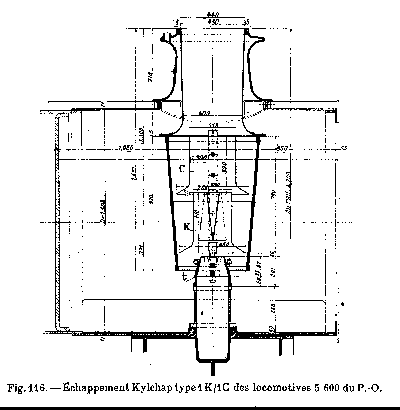
It's the "second stage" of the KylChap blasting (literal translation of French technical word for this part of a Marc Seguin's based design - I mean multiple smoketubes - of steam generator is exhaust, that's why I use it quite often and erroneously. Sorry.) Steam is "blown" in it by a first nozzle containing four triangular shaped blades . Drawings of it to come soon, but it can already be seen, not very clearly, in the drawing below.
Drawing: 39.4 K .gif file.



